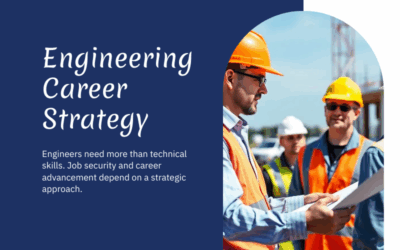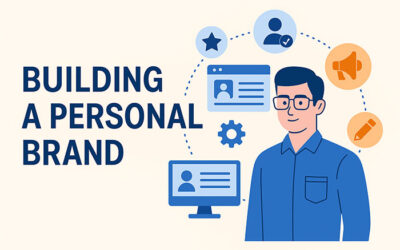Engineers operating in this dynamic environment are increasingly confronted with intricate technological hurdles, ranging from the urgent need to mitigate the impacts of climate change to the ever-present threats in the realm of cybersecurity. Addressing these multifaceted challenges demands a departure from conventional, formulaic approaches to problem-solving. Instead, engineers must cultivate and strategically apply sophisticated critical thinking skills to thoroughly analyze complex situations, identify underlying assumptions, and evaluate diverse perspectives. This intellectual rigor forms the bedrock upon which truly novel and effective solutions can be conceived.
Furthermore, the capacity for innovation is equally paramount in driving meaningful and sustainable progress within engineering disciplines. Innovation involves the generation of novel ideas, the creative synthesis of existing knowledge, and the practical implementation of new methodologies, technologies, or products. In an era characterized by disruptive technological advancements and the pressing need for more efficient and sustainable solutions, engineers must be adept at thinking beyond established boundaries, challenging conventional wisdom, and envisioning entirely new possibilities. The integration of critical thinking and innovation empowers engineers to not only solve immediate problems effectively but also to anticipate future challenges and proactively develop groundbreaking solutions that can shape the trajectory of their respective fields and contribute to the betterment of society as a whole. These intertwined competencies are therefore essential for engineers who aspire to be leaders and agents of positive change in the 21st century and beyond.
What Is Critical Thinking in Engineering?
Understanding Critical Thinking
Critical thinking is the disciplined process of actively and skillfully conceptualizing, applying, analyzing, synthesizing, and evaluating information. For engineers, critical thinking means approaching problems systematically, questioning assumptions, analyzing designs, and anticipating potential failures.
Key characteristics include:
- Logical reasoning
- Objective analysis
- Strategic questioning
- Reflective thinking
- Decision-making based on evidence
The Importance of Critical Thinking for Engineers
Without critical thinking, engineers risk making decisions based on incomplete information, bias, or flawed logic, leading to failures in project design, implementation, or maintenance.
Some pivotal reasons engineers must prioritize critical thinking:
- Risk Management: Identifying and mitigating risks before they become disasters.
- Efficiency: Streamlining processes and optimizing resources.
- Problem Solving: Developing innovative, sustainable solutions to real-world issues.
- Ethical Decision-Making: Balancing profit motives with societal and environmental impacts.
Innovation: The Engine Driving Engineering Progress
Defining Innovation in Engineering
Innovation involves introducing new ideas, methods, or products that provide novel solutions or improve existing processes. In engineering, this could range from developing a new material to reimagining energy storage methods.
Innovation thrives on:
- Creative thinking
- Open-mindedness
- Experimentation
- Cross-disciplinary collaboration
Why Innovation Matters for Engineers
Engineering without innovation is stagnant. As technologies, markets, and societal needs evolve, so must the approaches and solutions engineers offer.
Innovation empowers engineers to:
- Stay Competitive: Staying ahead in a global economy demands fresh solutions.
- Solve Emerging Problems: Tackling issues like renewable energy integration or autonomous vehicle safety.
- Enhance Quality of Life: Delivering safer, more efficient, and accessible technologies.
The Symbiosis Between Critical Thinking and Innovation
While often treated separately, critical thinking and innovation are deeply interconnected.
| Critical Thinking | Innovation |
| Evaluates existing knowledge and systems | Generates novel ideas and methods |
| Focuses on logical coherence and validity | Emphasizes creativity and exploration |
| Challenges assumptions rigorously | Breaks traditional boundaries |
| Guides risk assessment and management | Drives breakthroughs and new paradigms |
Engineers who blend critical thinking with innovation can dream big and ensure their ideas are viable, practical, and ethical.
Challenges Engineers Face in Applying Critical Thinking and Innovation
Despite their importance, many engineers struggle to integrate critical thinking and innovation due to:
- Cultural Constraints: Organizational resistance to change.
- Resource Limitations: Time, funding, or manpower shortages.
- Educational Gaps: A lack of training focused on critical analysis and creative problem-solving.
- Risk Aversion: Fear of failure inhibiting bold innovations.
Understanding these barriers is the first step toward overcoming them.
How to Develop Critical Thinking Skills as an Engineer
Building critical thinking is a continuous journey. Here are key strategies:
Embrace Systematic Problem-Solving Frameworks
Adopting models like the Engineering Design Process helps ensure thorough analysis:
- Define the problem
- Research and gather information
- Ideate solutions
- Prototype and test
- Analyze and iterate
Cultivate Intellectual Curiosity
Never accept solutions at face value. Question why and how things work—or don’t.
Tactics include:
- Reverse engineering existing solutions
- Regularly reading scientific and technical journals
- Participating in professional debates
Practice Reflective Thinking
After completing projects, reflect on what worked, what failed, and why. Structured post-mortem analyses can significantly boost critical reasoning.
Engage in Multidisciplinary Learning
Exposure to diverse fields, from philosophy to biology, fosters broader perspectives, enhancing analytical capabilities.
How Engineers Can Foster Innovation
Building a mindset for innovation demands intentional effort.
1. Embrace Failure as Learning
Innovation inherently carries the risk of failure. Rather than fearing it, engineers must view each setback as data.
Key approaches:
- Running low-risk experiments
- Adopting “fail fast, learn faster” mentalities
2. Create a Culture of Collaboration
Breakthroughs rarely happen in isolation. Collaborative brainstorming with diverse teams often generates novel insights.
Best practices:
- Cross-functional teams
- Open communication channels
- Psychological safety to voice ideas
3. Apply Design Thinking
Design Thinking places the end-user at the heart of the problem-solving process:
- Empathize
- Define
- Ideate
- Prototype
- Test
This iterative method helps ensure innovations are both groundbreaking and user-centric.
4. Stay Abreast of Emerging Technologies
Keeping pace with advancements in AI, materials science, or biotechnology can spark fresh ideas or inspire new applications of existing tools.
Building a Personal Innovation Framework
To consistently innovate, engineers benefit from developing a personal innovation framework—a mental model and set of habits that make creative problem-solving second nature.
1. Ideation Habit
Building the habit of daily or weekly ideation sessions trains the brain to think creatively under pressure. Engineers can schedule “idea generation” periods just like meetings, aiming not necessarily for usable solutions but simply to flex the imaginative muscles.
Tips for productive ideation:
- Set time limits (e.g., 20 minutes) to encourage rapid thought.
- Use prompts like “How might we…?” to focus creativity.
- Explore absurd ideas without judgment—some of the best innovations emerge from seemingly “impossible” starting points.
2. Continuous Learning
Innovators are, by nature, lifelong learners. They absorb new knowledge across multiple domains, allowing unexpected crossovers that fuel novel solutions.
- Subscribe to interdisciplinary journals.
- Take online courses outside your field (design, behavioral psychology, finance).
- Attend diverse conferences to hear new perspectives.
Over time, this constant influx of fresh inputs provides the mental raw material necessary for groundbreaking ideas.
3. Building a Failure-Tolerant Mindset
Resilience is a prerequisite for innovation. Not every experiment will succeed—and that’s a good thing. Failure offers data that success often masks.
Practical ways to build failure tolerance include:
- Conducting “pre-mortems”: Visualizing possible ways a project might fail in advance and preparing accordingly.
- Celebrating intelligent failures within teams.
- Separating identity from outcomes: Understanding that failed projects do not equate to personal failure.
Critical Enablers of Innovation for Engineers
Innovation doesn’t occur in a vacuum. Several environmental and psychological factors dramatically influence an engineer’s ability to innovate.
Organizational Environment
The culture of an engineer’s workplace plays a crucial role. Companies that encourage open communication, minimize bureaucratic hurdles, and allocate time for experimental projects (like Google’s famous “20% time”) are more likely to produce innovators.
Engineers should advocate for:
- Skunkworks teams: Small, semi-autonomous groups tasked with innovation.
- Innovation budgets: Funding for rapid prototyping without bureaucratic approvals.
- Cross-functional collaboration: Breaking down silos between departments.
Leadership Support
Without visible support from leadership, innovation initiatives often fizzle out. Effective leadership means:
- Giving engineers ownership over ideas.
- Rewarding risk-taking, even if it leads to failure.
- Setting ambitious goals that demand new thinking, not just incremental improvements.
Engineers can foster grassroots innovation cultures by modeling these behaviors even when leadership support is inconsistent.
Psychological Safety
Research shows that innovation flourishes when team members feel safe to voice unconventional ideas without fear of ridicule or punishment.
Creating psychological safety involves:
- Valuing diverse opinions.
- Encouraging questioning of assumptions.
- Treating mistakes as learning opportunities, not causes for blame.
Techniques to Supercharge Innovation
Beyond personal habits, there are structured innovation techniques engineers can apply:
TRIZ (Theory of Inventive Problem Solving)
Developed from an analysis of patterns in thousands of patents, TRIZ offers a systematic way to solve problems by eliminating contradictions. It provides engineers with 40 inventive principles to apply across domains.
Example:
- If a material must be both flexible and rigid (a contradiction), TRIZ suggests solutions like layering materials with different properties.
Brainwriting
Instead of traditional brainstorming, where dominant personalities may steer discussion, brainwriting involves silently writing ideas on paper, then building off others’ ideas in rounds. This process democratizes innovation and often leads to richer results.
Lateral Thinking
Coined by Edward de Bono, lateral thinking encourages approaching problems from radically different angles rather than straightforward logical steps.
Techniques include:
- Random word association
- Provocative statements (“Po”) to challenge norms
- Reversing assumptions (e.g., “What if customers paid us not to use the product?”)
Obstacles to Engineering Innovation—and How to Overcome Them
Despite all the tools and mindsets available, innovation in engineering still faces persistent obstacles:
| Obstacle | Solution |
| Risk aversion | Build psychological safety, normalize failure |
| Siloed knowledge | Foster cross-disciplinary collaboration |
| Short-term pressures | Create protected innovation timelines |
| Lack of user understanding | Integrate user feedback early and often |
| Outdated processes | Adopt agile methodologies and rapid prototyping |
Overcoming these barriers requires systemic changes, but even small team-level initiatives can create momentum.
The Role of Critical Thinking in Driving Meaningful Innovation
While innovation demands creativity, critical thinking ensures relevance and feasibility. Without critical evaluation, even brilliant ideas may fail during implementation.
Here’s how critical thinking enhances each stage of innovation:
- Idea Evaluation: Analyzing potential ideas for real-world applicability.
- Risk Assessment: Identifying potential unintended consequences early.
- Scalability Analysis: Ensuring that innovations can be realistically produced or implemented at scale.
- Ethical Scrutiny: Weighing the broader societal impacts of new technologies.
Thus, engineers must blend divergent thinking (creativity) with convergent thinking (critical evaluation) throughout the innovation lifecycle.
Real-World Example: SpaceX and the Innovation-Critical Thinking Loop
SpaceX offers a powerful example of balancing innovation with critical thinking. Their iterative design process for rockets like the Falcon 9 and Starship involves:
- Rapid prototyping (“build it, break it, learn from it”)
- Aggressive testing schedules
- Continuous questioning of design assumptions
- Constant iteration based on real data, not theoretical models alone
By applying rigorous critical analysis to each innovation cycle, SpaceX has dramatically reduced the cost of space launches, transforming an entire industry.
Critical Thinking and Innovation in Emerging Fields
As the Fourth Industrial Revolution unfolds, engineers will confront even more complex, unpredictable challenges. Key emerging fields include:
- Quantum Computing: Demands new logical frameworks and rethinking computational assumptions.
- Synthetic Biology: Requires navigating ethical minefields alongside biological engineering.
- Sustainable Engineering: Innovation here isn’t optional—it’s imperative for planetary survival.
- AI-Enhanced Engineering: Engineers must critically evaluate AI outputs rather than blindly trusting algorithms.
In each of these fields, critical thinking remains the firewall against unintended consequences, while innovation opens doors to transformative possibilities.
Self-Assessment: Are You Cultivating These Skills?
Engineers aiming to master critical thinking and innovation can regularly self-assess by asking:
- Do I question assumptions before accepting them?
- Am I consistently exposing myself to new ideas and fields?
- Do I treat failures as valuable data points?
- Have I contributed new ideas in the past month, even small ones?
- Am I collaborating across disciplines?
Regular honest reflection ensures continued growth.
Building the Engineering Cultures of Tomorrow
Engineering organizations that want to thrive in the future must invest now in nurturing critical thinkers and innovators.
Key practices include:
- Embedding innovation and critical analysis into performance evaluations.
- Redefining leadership training around fostering creativity and analytical rigor.
- Allocating real budgets—not just lip service—for experimental projects.
- Celebrating not just final products but the innovation journey itself.
Companies that do this will not only attract the best engineering talent but will set the pace for entire industries.










